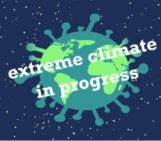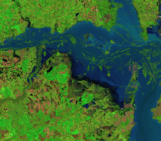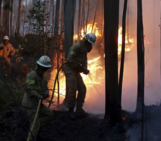
The ancient Greek philosopher Heraclitus once said, “there is nothing permanent except change”. We are living in an epoch where constant change is the new normal. Unquestionably, climate change is one of the most significant challenges of our time. How can we shape our thinking to become more agile to change, and what attributes do organisations and societies need to increase their capacity to adapt?
As the Earth continues to warm, changes in the climate system are becoming more significant, showing an increase in the frequency and intensity of climate extremes [1]. While changes in global climate continue to strain the resilience of our cities and infrastructure worldwide, the extent of extreme events, such as the recent heatwaves in Europe or the floods in Pakistan, make us question whether we are going in the right direction [2]. While enhancing mitigation action is needed to meet the Paris Agreement goals, at the same time, it is essential to adapt to extreme and compound events that can cause significant and long-lasting socio-economic impacts; ignoring the need to adapt is no longer an option. Indeed, mitigation and adaptation strategies can be seen as complementary and synergic in achieving the sustainable development of our society.
Although adaptation is still challenging worldwide, it has been identified as one of the main groups of actions to strengthen the global response to climate change [3]. As a term, it refers to the “adjustment to actual or expected climate and its effects, in order to moderate harm or exploit opportunities”[4], addressing the ability of urban systems to reduce the negative impacts of climate change. Adaptation is an integral part of the risk management process; it can reduce the vulnerabilities of cities or infrastructure, enabling the adjustment of functions or characteristics to increase their ability to cope with existing climate variability, anticipate future change and adjust to potential damage. Adaptation can take many forms depending on the circumstances and climate challenges, from large-scale interventions that reduce the sensitivity of infrastructure to climate hazards, to measures that limit the exposure to climate risks or actions that aim to change behaviour.

London Underground station flooded (Photo credit: Pete Linforth from Pixabay, Pixabay License)
But what defines the ability to adapt and how can it be shaped to support effective adaptation planning?
Adaptive capacity is…
Adaptive capacity is defined by the IPCC [4] as “the ability of systems, institutions, humans and other organisms to adjust to potential damage, to take advantage of opportunities or to respond to consequences“. In simple terms, adaptive capacity expresses our capability to change to make new conditions favourable.
Let’s look at the main characteristics of adaptive capacity. Coping with the change reflects the ability to deal with short-term climate-related threats by taking specific actions. Adjusting to potential damage is another element; for instance, strengthening infrastructure to withstand extreme heat or building protective flood defences to increase the capacity to resist the impact of inundation. This incorporates the element of anticipation, the ability to foresee future change and take measures to reduce its potential impact. Another feature of adaptive capacity describes an established response mechanism and the existence of early warning systems that enhance the ability to respond to a climate hazard, such as a storm. Furthermore, an important attribute is the ability of organisations or societies to transform through a process of understanding climate risk, designing and implementing effective adaptation strategies (for instance, using hazard maps to identify suitable land for resilient urban planning), learning from previous experiences and, based on that acquired knowledge, becoming better equipped to cope with future climate [5-8]. This raises the issue of culture, how agile our way of thinking is, how we perceive change and how willing we are to take action.

Elements of adaptive capacity (Photo credit: author, content adapted from the literature [5-8])
What does it take to build adaptability?
Adaptation studies usually describe adaptive capacity as referring to tangible and non-tangible parameters, such as available resources (for instance, natural, financial, institutional, technological, and human) and the ability to use these resources effectively to pursue adaptation options [5-7]. Indeed, having enough financial resources to plan and deliver a series of adaptation measures strategically is critical, especially for vulnerable countries. So is social capital, as it facilitates getting things done.
Having the right mindset and enabling the transformation needed to adapt to change is an attribute of equal importance. Factors like knowledge, experience, participation, awareness, and perception that shape our beliefs can positively build adaptive capacity [7]. Therefore, this makes adaptation a highly social process requiring changes in people’s behaviours.
Building adaptability also requires willingness; a successful strategy implies a willingness to adapt and, therefore, commitment to work together to take action. It also suggests accountability and acceptance of the risk linked to climate change.
It’s time to reflect…
Humans are naturally adaptive as species, able to react to the changing environment. While this human attribute provides the foundation to build upon to adjust to change through learning, develop response mechanisms, and create anticipation [8], in some cases, it does not seem enough to deal with the complexities and uncertainties associated with climate change. Our capacity to cope tends to depend, to a certain extent, on the characteristics of the environment in which we live that shapes our perceptions and way of understanding. As the world changes, perhaps it’s time to reflect on the qualities we, as societies, need to develop to evolve further.
References
[1] IPCC (2021), 6th Assessment Report
[2] United Nations (2022), United in Science: We are Heading in the Wrong Direction
[3] United Nations (2015), Paris Agreement
[4] IPCC (2021), Glossary
[5] Brooks N. & Adger N. (2005), Assessing and Enhancing Adaptive Capacity
[6] Engle N. (2011), Adaptive capacity and its assessment
[7] Bossio et al. (2019), Adaptive capacity in urban areas of developing countries
[8] Green et al. (2021), How adaptive capacity shapes the Adapt, React, Cope response to climate impacts: insights from small-scale fisheries
Post edited by Silvia De Angeli and Paulo Hader




